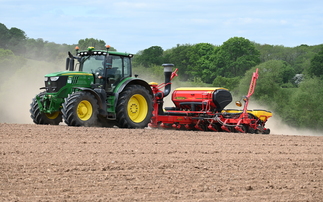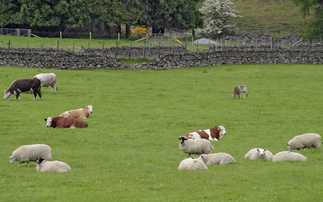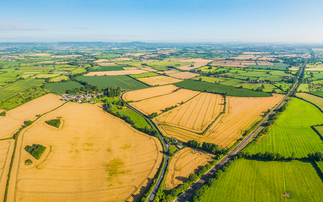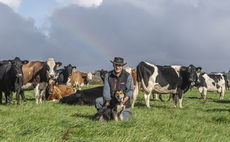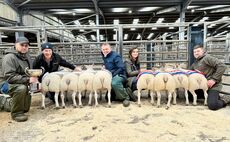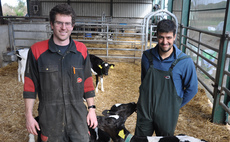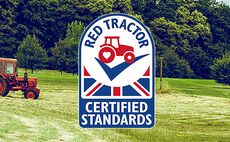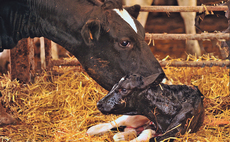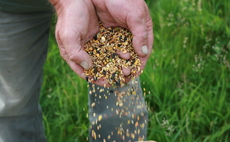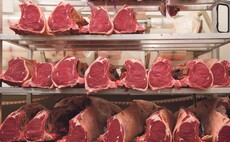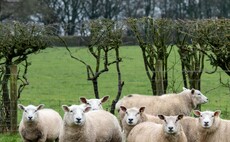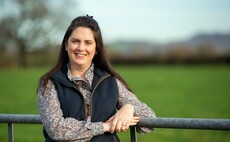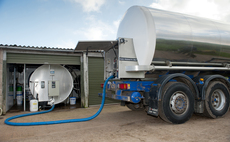
Maximising milk production from every mouthful, careful selection of feed ingredients and reducing age at first calving can help dairy farmers reduce their carbon footprint.
According to Dr Matt Witt, Mole Valley Farmers sustainability and technical manager, there are a number of hotspots which can have a significant impact on a farms environmental impact (see panel, below).
However, with research from Nottingham University showing feed was responsible for 46 per cent of dairy farmings greenhouse gas emissions, the diet is a good place to start, although its impact will vary between farms.
A recent Mole Valley Farmers survey highlighted 38 per cent of farmers wanted to reduce the environmental impact of their animals diets (see graphic, below).
As part of the farmer-owned business Climate Positive Agriculture initiative, Dr Witt carried out modelling work using Mole Valley Farmers Precision Nutrition rationing programme to identify practical ways to lower the carbon footprint (CFP) of cow diets and the farm as a whole.
He looked at two 300-cow herds provided with similar rations in terms of nutrient analysis and dry matter intakes.
By changing feed ingredients and using higher quality forages, he was able to lower the CFP of purchased feeds in the milking ration by two-thirds; down from 0.33kg CO2e/litre of milk to 0.132kg CO2e/litre.
This included:
1 Providing a well-balanced ration with quality forage:
By feeding higher quality grass and maize silage and grazed grass, together with balancing the diet correctly, cows were predicted to produced 1.7 litres/cow/day more.
It was also higher quality, up from 4 per cent to 4.2 per cent butterfat and 3.1 per cent protein to 3.3 per cent protein. The higher yields helped dilute the CFP.
2 Selecting lower CFP ingredients:
The same amount of concentrate was used in both scenarios, but in the lower CFP example, Dr Witt removed soya hulls and soya bean meal and replaced them with British-grown sugar beet and rumen-protected rapeseed expeller, respectively.
He adds: In this instance, the great thing is the modelling work showed that margin over purchased feed also increased by nearly 60p/cow, based on the predicted increase in milk yield.
Whole farm CFP
The data was then inputted into the whole farm CFP calculator, Cool Farm Tool, where Dr Witt was also able to illustrate that lowering age at first calving (AFC) had a positive impact on the farms environmental credentials.
He says: By lowering AFC from 30 to 24 months, less unproductive stock was carried on-farm. This reduced feed
requirements and the total forage area needed to support the herd. It also lowered enteric methane production.
This, together with the better management, led to a large reduction in the farms CFP (see table, below).
Dr Witt says: A well-balanced ration, combined with high quality forage, will drive milk production and quality. This, along with carrying the right number of livestock units, so forage area and fertiliser requirements can be optimised, will be part of a wider solution to lowering a dairy farms total CFP.
Environmental hotspots
- Feed
- Fertiliser
- Enteric methane
- Fuels and energy
- Manure
Feed tops list for environmentally conscious farmers
398
Farmer respondents
(dairy, beef, sheep or arable)
38%
wanted to reduce the environmental impact of their animals diets; 43% said they would if it was a requirement
MOST IMPORTANT
Improving forage quality and switching from feeds with a high carbon footprint were seen as the most important
>1/3
of farmers had not started making changes to reduce their environmental impact, 28% had
Source: Mole Valley Farmers Environmental Survey
Impact of management on the CFP associated with feed and enteric fermentation
Carbon footprint (kg CO2e/kg fat and protein corrected milk)
| Better nutrition, higher quality forages, good heifer management and health and welfare | Poorer nutrition, forage quality, heifer management and health and welfare | |
| Feed production | 0.29 | 0.62 |
| Enteric fermentation | 0.40 | 0.46 |








